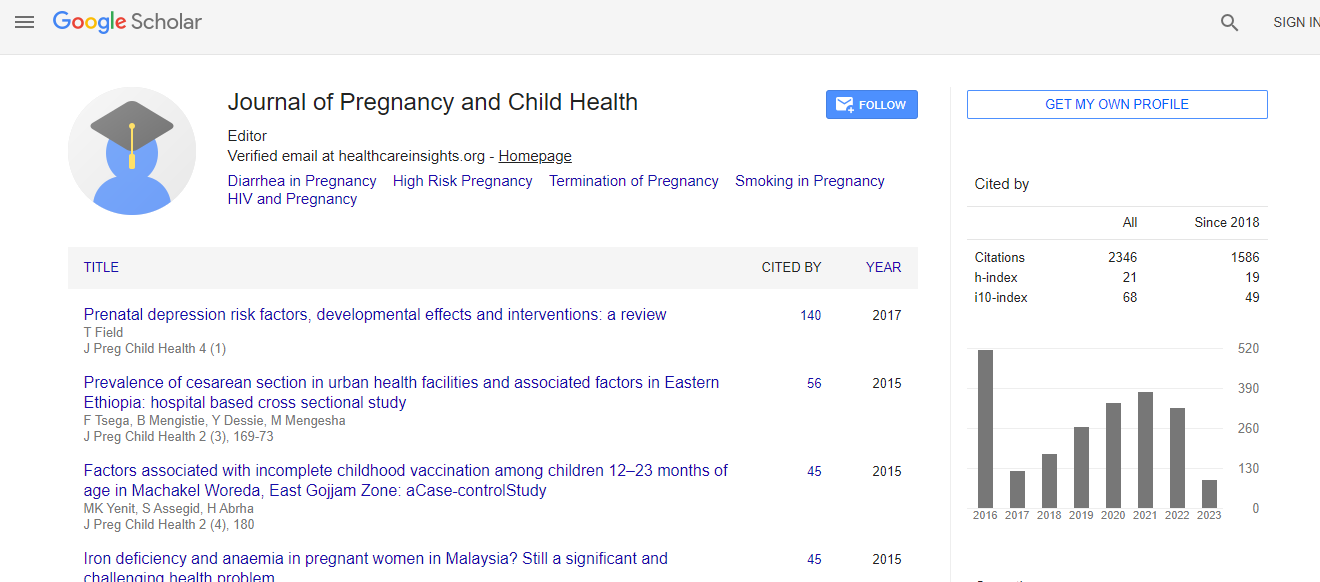Research Article
Maternal and Foetal Outcomes in Patients with Previous Caesarean Section Undergoing Trial of Vaginal Birth at a Tertiary Care Centre in North India
| Nilanchali Singh*, Reva Tripathi and YM Mala | |
| Maulana Azad Medical College and associated LokNayak Hospital, Bahadur Shah ZafarMarg, Delhi Gate, New Delhi, India | |
| Corresponding Author : | Nilanchali Singh Maulana Azad Medical College and associated LokNayak Hospital Bahadur Shah ZafarMarg, Delhi Gate, New Delhi, India Tel: 919811343168 E-mail: nilanchalisingh@gmail.com |
| Received July 11, 2014; Accepted July 25, 2014; Published August 02, 2014 | |
| Citation: Singh N, Tripathi R, Mala YM (2014) Maternal and Foetal Outcomes in Patients with Previous Caesarean Section Undergoing Trial of Vaginal Birth at a Tertiary Care Centre in North India. J Preg Child Health 1:102. doi: 10.4172/2376-127X.1000102 | |
| Copyright: © 2014 Singh N, et al. This is an open-access article distributed under the terms of the Creative Commons Attribution License, which permits unrestricted use, distribution, and reproduction in any medium, provided the original author and source are credited. | |
Abstract
Objective: The objective of this study is to evaluate clinical criteria conventionally known to affect mode of delivery in previous caesarean section cases. We also aim to study the maternal and neonatal outcome in vaginal birth after Caesarean section and repeat Caesarean Section.
Study Design: This is a prospective longitudinal study.
Patients and Methods: Pregnant women with previous caesarean section presenting in antenatal clinic were recruited in the study. A detailed history was taken and routine antenatal care given. Mode of delivery decided as per the protocol followed in routine. Maternal and neonatal outcome were noted.
Result: The VBAC rate was 67.6%. Foetal distress and meconium stained liquor were the most common indications of repeat Caesarean section. Interval between previous Caesarean and current pregnancy was significantly more in the vaginal delivery group (p value <0.001). The number of prior vaginal deliveries after Caesarean section was significantly more in the vaginal delivery group (p value<0.001). Incidence of Caesarean hysterectomy and infectious morbidity were significantly more in emergency repeat Caesarean section group. There was no significant difference in the neonatal outcome in the two groups.
Conclusion: Successful trial of labour in previous caesarean is associated with better outcomes than emergencycaesarean section and hence appropriate selection of patients for trial of VBAC is necessary, especially in low resource settings where facilities of feto-maternal monitoring are limited.

 Spanish
Spanish  Chinese
Chinese  Russian
Russian  German
German  French
French  Japanese
Japanese  Portuguese
Portuguese  Hindi
Hindi 
